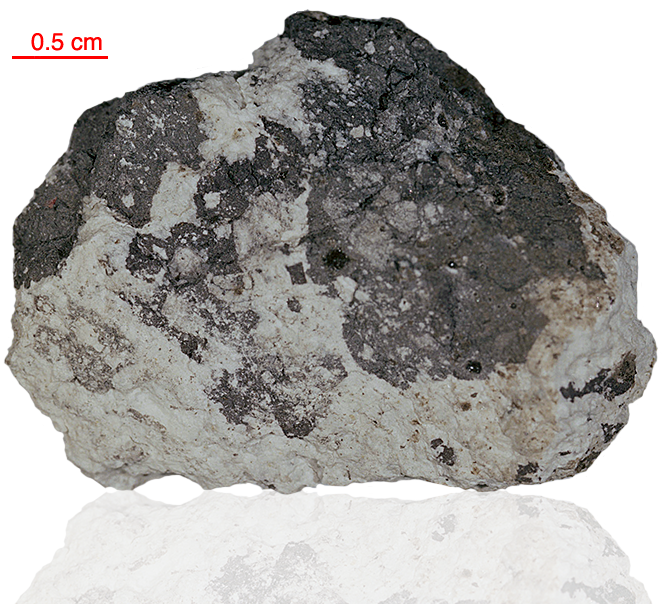
Fact sheet
64425 was sieved from soil 64420. It is part granulated ferroan anorthosite (white) and part fragment-laden impact-melt (dark). The dark melt rock invades the white anorthosite and forms a network of thin veinlets that envelop the anorthosite fragments. The melt rock varies from subvitreous to very fine grained intersertal. It has from zero to 50 % clastic material, either gabbroic or rich in plagioclase feldspar, with minor globules of metallic iron intergrown with troilite and or schreibersite.
The sample weighed 14.62 grams before analysis and has not been dated.
Further details of this and other Apollo samples are here: http://curator.jsc.nasa.gov/lunar/
The Apollo 16 landing site was in the hilly region around Descartes crater in the lunar highlands. The landing spot was chosen to allow the astronauts to gather geologically older lunar material (Descartes Formation and the Cayley Formation) than the samples obtained in the first four landings, which were in or near lunar maria.
The mission lasted 11.1 days, with a stay on the lunar surface of 71 hours. The crew were on the lunar surface for 20.2 hours during which they traversed approximately 27 kilometers and collected approximately 96 kilograms of samples.
Apollo 16 was launched on 16 April 1972.






